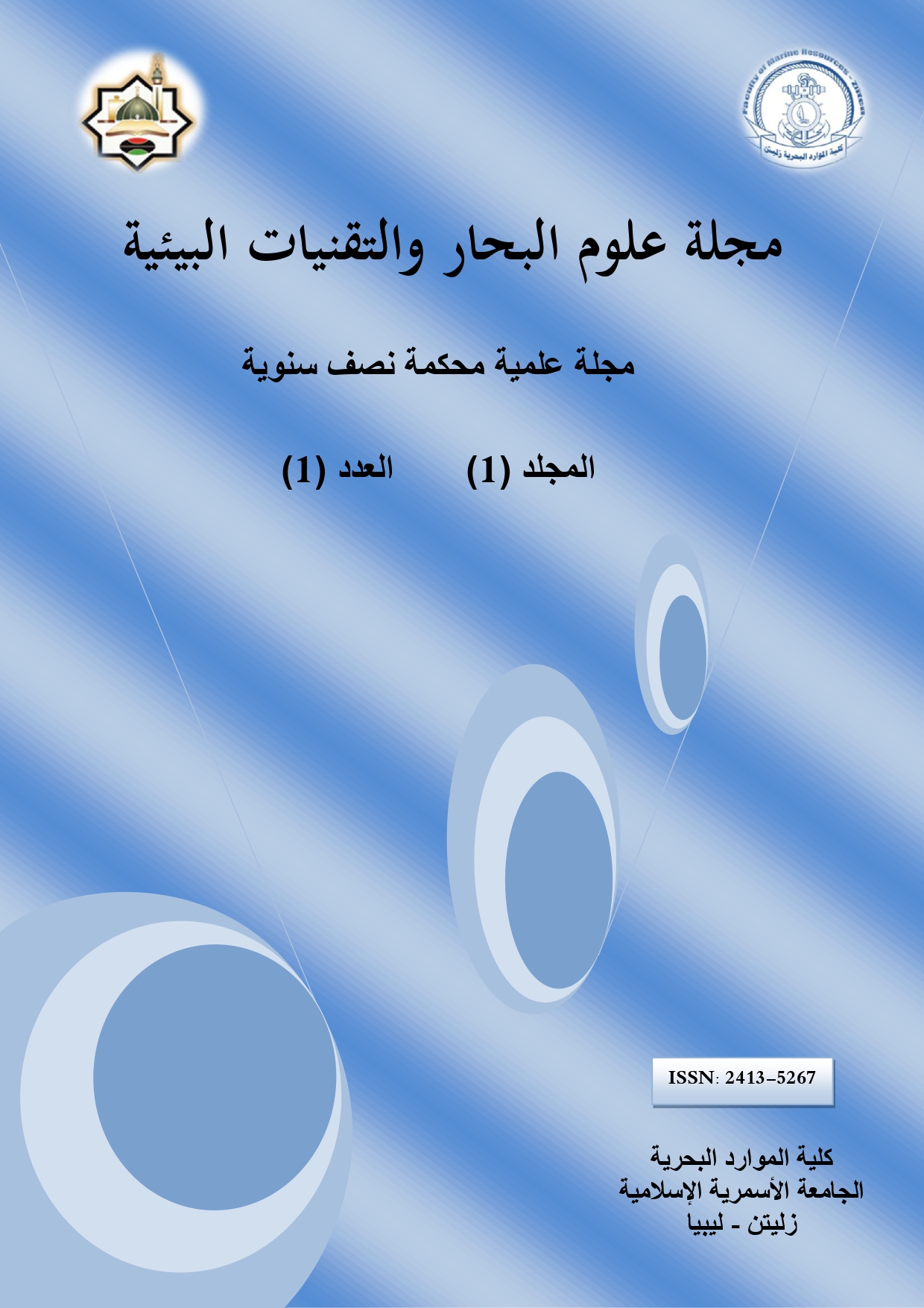توليد الطاقة الكهربائية باستخدام الطاقة الحرارية لمياه البحر قبالة الشواطئ الليبية
DOI:
https://doi.org/10.59743/jmset.v1i1.141الكلمات المفتاحية:
طاقة متجددة، أسبن هايسيس، الساحل الليبي، زليتن، دورة رانكنالملخص
تحويل الطاقة الحرارية للمحيطات/البحر إلى طاقة كهربائية، تعرف بـــOTEC أو تعرف بــSTEC، حيث يُستخدم التباين في درجة الحرارة بين طبقات سطح المياه العليا مع درجات حرارة طبقات المياه العميقة في توليد الطاقة من خلال استخدام الدورة الحرارية. تعرض هذه الدراسة إمكانية استخدام هذه التقنية في مياه البحر الأبيض المتوسط قبالة شواطئ مدينة زليتن في شمال غرب ليبيا. تركز هذه الدراسة على تصميم ومحاكاة الدورة الحرارية التي تعمل في ظروف مستقرة استنادا إلى البيانات المناخية الفعلية باستخدام برنامج المحاكاة أسبن-هايسيس الإصدار 7.3. أشارت النتائج إلى أن دورة الحرارية المغلقة يمكن أن تقدم مصدرا محتملا للطاقة المتجددة، وبيانات التصميم الناتجة من حرارة المحرك المستخدمة لتحويل الطاقة الحرارية إلى طاقة كهربائية هي عمليه وفعالة في توليد حوالي 25 ميجاوات من الطاقة الكهربائية دون حدوث أي مخاطر تُذكر على البيئة.
المراجع
Avery W.H. & Wu C. (1994). Renewable Energy from the Ocean. Oxford University Press, New York.
Avery W.H., Richards D., & Dugger G.L. (1985). Hydrogen generation by electrolysis, and economical energy transfer to world markets via ammonia and methanol. Int. J. Hydro. Energy, 10(11): 727-736.
CRRC "Coastal Response Research Center" (2009). Technical Readiness of Ocean Thermal Energy Conversion (OTEC). National Oceanic and Atmospheric Administration, National Ocean Service, Office of Ocean and Coastal Resource Management, University of New Hampshire.
Finney K.A. (2008). Ocean Thermal Energy Conversion. Guelph Engineering Journal, (1): 17-23.
Francis E.J. & Dugger G.L. (1980). Promising applications of OTEC. In Proceedings 7th Energy technology conference, U.S. Department of Energy, Washington D.C.
Jagusztyn T. F. & Reny M. (2010). Natural Cold Water District Cooling Plants Enabled by Directional Drilling. In Road to Climate Friendly Chillers UNEP–ASHRAE Conference Sept.
Larson-Basse J. & Daniel T.H. (1983). OTEC heat transfer experiments at Keahole Point, Hawaii. In Proceedings Oceans '83 conference, Paper F2-4, Marine Technology Society.
Myers E.P., Hoss D.E., Matsumoto W.M., Peters D.S., Seki M.P., Uchida R.N., Ditmars J.D., & Paddock R.A. (1986). The Potential Impact of Ocean Thermal Energy Conversion (OTEC) on Fisheries. NOAA Technical Report NMFS, 40: 33.
NCCC "National Center of Climate Changes" at Khoms City, Climate Data of Khoms/Zliten area, Libya.
NOAA (1981). Final environmental impact statement for commercial ocean thermal energy conversion (OTEC) licensing. Office of Ocean Minerals and Energy, National Oceanic and Atmospheric Administration, Washington D.C.
SOPAC "South Pacific Applied Geoscience Commission" (2001). Ocean Thermal Energy Conversion and the Pacific Islands. SOPAC Miscellaneous Report 417, prepared by; Rupeni Mario, South Pacific Applied Geoscience Commission, Japan.
Takahashi P. & Trenka A. (1996). Ocean Thermal Energy Conversion. John Wiley & Sons, Chichester.
Thomas G. (1993). An Assessment of Ocean Thermal Energy Conversion as an Advanced Electric Generation Methodology. In proceedings of the IEEE, 81(3).
Twidell J. & Weir T. (1994). Renewable Energy Resources. E & FN Spon, UK.
Vega L.A. (1995). Ocean Thermal Energy Conversion in Encyclopedia of Energy Technology and the Environment. John Wiley & Sons, Inc., New York.
التنزيلات
منشور
إصدار
القسم
الرخصة
الحقوق الفكرية (c) 2015 مجلة علوم البحار والتقنيات البيئية

هذا العمل مرخص بموجب Creative Commons Attribution 4.0 International License.









